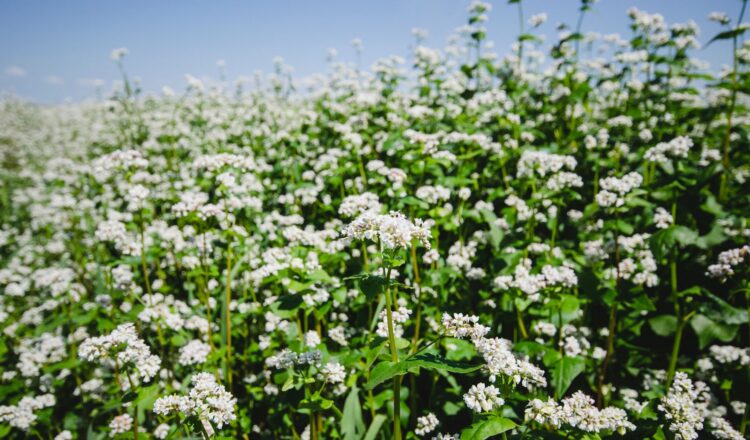Pictured is buckwheat, the “garden workhorse”
By Deb Bigelow, Master Gardener Volunteer Cornell Cooperative Extension Allegany County
Now that cover crop seed is widely available in small quantities for home gardeners, it’s easier than ever to incorporate these wonder-workers into your garden plans. While planning your seed purchases, take time to review last year’s season. Did you have a bed or area that was too weedy to give good yields? Need organic matter? Getting things to grow just took too much time and attention? Consider planting a spring cover crop of oats. They germinate readily in cooler soil, can tolerate wetness fairly well and, planted densely, can quickly cover the soil and prevent weed germination. Oats tolerate a wide pH range but do require lots of sun. (Plant again in early fall to make a winter-killed mulch that protects and conserves soil.) Cut or mow at around 45 days of growth, and either let dry on the surface or incorporate to add organic matter.
Another inexpensive, easy springtime weed suppressor is annual rye, not to be confused with cereal rye, also called garden rye or ryegrass. Annual rye germinates easily in cool soils and if planted thickly grows rapidly to a dense canopy that crowds out weeds. It can be cut several times (and fed to the pet rabbits or to chickens!) then turned under to decompose and add organic matter. Later in spring, after your soil is warmed to at least 50 degrees F, you can plant buckwheat, the garden workhorse. Not only does buckwheat suppress weeds and gather up phosphorus for your subsequent crops, but the flowers will make your resident bees very happy. But only for a while: unless you want to save seed or risk lots of volunteers (not really a bad thing – they are easy to remove if not wanted) you must cut it just after flowering, around 2 – 3” up from the soil surface, to stop growth. You may then just leave the stalks on the surface to dry and mulch your next crop. Planting into buckwheat residue is easy and pleasant and reduces the amount of new mulch needed.






